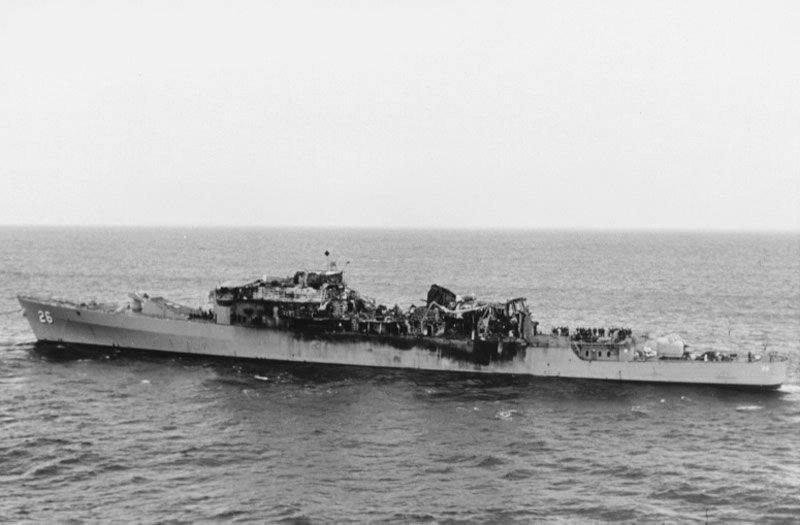Pointblank
Senior Member
Re: Ideal chinese carrier thread
The problem then becomes endurance; you have a much smaller magazine and fuel load compared to a equivalent carrier of the same displacement. Those engines will drink fuel at a prodigious rate, meaning frequent refueling. Furthermore, sortie rates will decrease as there is less ammunition to go around all of the airplanes. Large air wings aren't all that useful if they can't maintain an effective sortie rate.
Aluminum is still not a material I would build warships out of; HMS Amazon had a major fire in 1977, and the aluminum superstructure was faulted as being a hindrance to firefighting as the superstructure melted and buckled under the heat of the fire, which made the ladders useless. Furthermore, the USS Belknap had a fire in 1975 after a collision with the USS John F. Kennedy. The fire was so severe on Belknap that the entire superstructure, which was made of aluminum, was melted, burned and gutted to the deck level. This is a picture of her after that fire:

After all of these incidents, plus the experiences of the Falkland Wars, many navies made efforts to reduce the amount of combustibles used in the construction of ships, Aluminum, plastic and fibreglass burns or melts readily in the types of fires found on ships.
I think that's misleading. Ships of equal displacement will have virtually identical below-waterline volumes. A multi-hull will generally have more above-waterline volume per given displacement.
So, in general terms, a 30,000 tons displacement carrier can easily have a larger hanger than a 60,000 ton monohull carrier. This is why many modern ferries are multi-hulls. The one that comes to mind is:
[qimg]http://www.yachtboutique.com/images/NonSWA.jpg[/qimg]
[qimg]http://blog.usni.org/wp-content/uploads/2008/12/be-n-4.jpg[/qimg]
Where multi-hulls have a trade-off is in the limited weight that can be stored in the relatively spacious upper structure. Fortunately hangers are mostly air, which is free.
Going back to what Popeye and others have pointed out, the true compromise is in heavy stores/munitions/fuel because these are normally stored near/below waterline. All other things being equal, the 30,000 ton multi-hull carrier can only carry about 50-70% the amount of these items as the equivalent 60,000 ton monohull carrier. You could get a bit more by mounting the engines higher (I'd rather not, prefer a larger hanger deck) or using lighter materials.
I'd advocate alloys and composites for many internal 'non-structural' elements and parts of the hull above waterline. The usual cries are about fire issues but these are hotly disputed and alloys are receiving a revival. Much of the anti-aluminum rants are actually off the mark, for example HMS Sheffield in 1982.
The deck would not be armoured. Controversial but realistic.
The problem then becomes endurance; you have a much smaller magazine and fuel load compared to a equivalent carrier of the same displacement. Those engines will drink fuel at a prodigious rate, meaning frequent refueling. Furthermore, sortie rates will decrease as there is less ammunition to go around all of the airplanes. Large air wings aren't all that useful if they can't maintain an effective sortie rate.
Aluminum is still not a material I would build warships out of; HMS Amazon had a major fire in 1977, and the aluminum superstructure was faulted as being a hindrance to firefighting as the superstructure melted and buckled under the heat of the fire, which made the ladders useless. Furthermore, the USS Belknap had a fire in 1975 after a collision with the USS John F. Kennedy. The fire was so severe on Belknap that the entire superstructure, which was made of aluminum, was melted, burned and gutted to the deck level. This is a picture of her after that fire:

After all of these incidents, plus the experiences of the Falkland Wars, many navies made efforts to reduce the amount of combustibles used in the construction of ships, Aluminum, plastic and fibreglass burns or melts readily in the types of fires found on ships.
